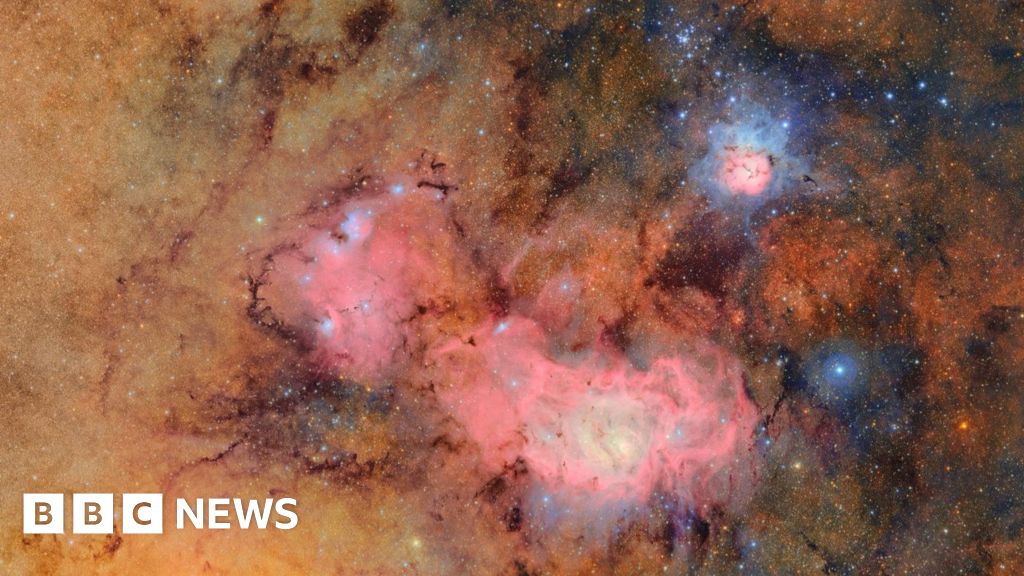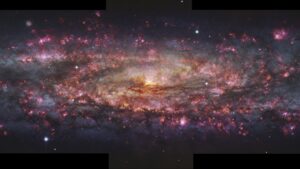
The Vera C. Rubin Observatory in Chile has released its first celestial image, showcasing its unprecedented ability to peer into the universe’s dark depths. The image, capturing the Trifid and Lagoon nebulae, reveals vast, colorful gas and dust clouds swirling in a star-forming region 9,000 light years from Earth. This marks a significant milestone for the observatory, which houses the world’s most powerful digital camera and promises to transform our understanding of the cosmos.
The observatory, located on Cerro Pachón in the Chilean Andes, is poised to detect killer asteroids, map the Milky Way, and answer crucial questions about dark matter. This once-in-a-generation moment for astronomy initiates a continuous 10-year filming of the southern night sky. According to Professor Catherine Heymans, Astronomer Royal for Scotland, “For decades, we wanted to build this phenomenal facility and conduct this type of survey.” The UK is a key partner in the survey, hosting data centers to process the detailed snapshots captured by the telescope.
Revolutionary Technology and Design
The Vera Rubin Observatory’s cutting-edge technology includes a unique three-mirror design that optimizes light capture. Light enters the telescope, hits the primary mirror, and is reflected onto secondary and tertiary mirrors before entering its 3,200-megapixel camera. This design ensures high reflectivity and speed, crucial for observing distant astronomical phenomena. Guillem Megias, an active optics expert, emphasizes the importance of capturing light from “really far away,” which in astronomy translates to observing events from earlier cosmic times.
The observatory’s camera, built by the US Department of Energy’s SLAC National Accelerator Laboratory, is a marvel of engineering. Weighing 2,800 kg and with a wide field of view, it captures an image every 40 seconds for about 8-12 hours each night. “When we got the first photo up here, it was a special moment,” Megias recalls, highlighting the project’s generational significance.
Scientific Ambitions and Global Collaboration
The Vera Rubin Observatory’s ambitious survey will focus on four primary areas: mapping changes in the skies, understanding the Milky Way’s formation, mapping the Solar System, and exploring dark matter. Its biggest strength lies in its constancy, as it repeatedly surveys the same areas, alerting scientists to any changes. This continuous data stream will be analyzed by hundreds of scientists worldwide, with data alerts peaking at around 10 million each night.
The observatory’s location in the Chilean Andes, a region known for its high altitude, dryness, and darkness, is ideal for astronomical observation. Maintaining this darkness is crucial, with strict measures in place to minimize light pollution. The engineering team ensures that the dome surrounding the telescope remains dark, avoiding any interference with the captured starlight.
Implications for Future Discoveries
The Vera Rubin Observatory’s capabilities extend beyond capturing stunning images. If a ninth planet exists in our solar system, scientists believe this telescope could detect it within its first year of operation. The observatory is also expected to significantly increase the number of known objects in our solar system.
As the observatory embarks on its decade-long survey, the global scientific community eagerly anticipates the wealth of data it will generate. This continuous observation of the night sky represents a monumental leap forward in our quest to understand the universe’s history and composition.
The Vera Rubin Observatory’s first image is not just a glimpse into the cosmos but a testament to the collaborative efforts of scientists and engineers worldwide. As it continues to capture the universe’s mysteries, the observatory stands as a beacon of human curiosity and innovation.







